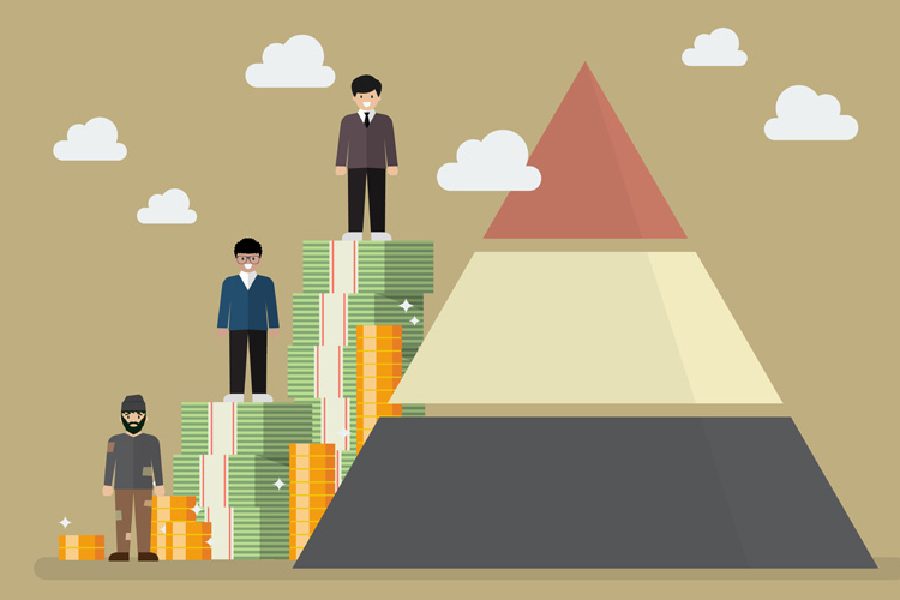A recent report filed by the Paris-based World Inequality Lab, titled Income and Wealth Inequality in India 1922-2023: The Rise of the Billionaire Raj, has found that the country has one of the highest levels of income and wealth inequality in the world. In terms of income inequality alone, India surpasses countries like South Africa, Brazil and the United States of America. The report also suggests that in the years 2022-23, the income and wealth shares of the top 1%, at 22.6% and 40.1%, respectively, were at their highest historical levels. This is worse compared to the inequality that was experienced even during the colonial era. What can be deduced at a more granular level is that inequality in India seems to have peaked during the last one and a half decades. There are other, equally significant, findings as well. The report notes that India’s income-tax regime is regressive when viewed through wealth distribution; this implies that the rich pay lower taxes compared to the poor as a proportion of their wealth. The report also alleges that the quality of official economic data in India has declined and that its own estimates represent the lower bound on inequality.
That India is a deeply unequal nation is irrefutable. What is of concern though are the repeated findings by experts and academics using a huge amount of historical data that reiterate the deepening of inequality in the country. This indicates the absence of any concerted effort to reduce the problem even though its impact is varied and corrosive. For instance, inequality contributes to the erosion of social cohesion. It increases deprivations in the areas of health, education, and employment. Finally, as a result of embedded inequality, the elites gain inordinate influence over governments, thereby indirectly shaping the formulation of policies. What must also be acknowledged is that inequality is not static. It continues to evolve as a result of transitions in technology or changing patterns of trade triggered by globalisation. For instance, in India, the sphere of employment is polarised — high-paying, high-tech jobs abound along with low-end jobs, such as those concerning the delivery of commodities or security personnel. Interestingly, the growing problems of unemployment, underemployment as well as job insecurity — Narendra Modi’s reign has been plagued by these challenges — often lead to a collective desire for the election of a strong leader.
In the absence of strategic long-term policies to address the widening chasm, opportunities remain restricted to a handful in an economy that is ironically one of the fastest growing in the world. Moreover, policies appear to be designed to maintain the status quo. Then, there is the inevitable attraction for populism. Consequently, political parties, whether in government or as the Opposition, encourage the handing out of short-term doles instead of planning for sustainable, long-term poverty alleviation programmes. Moreover, discussions on imposing greater taxes on the rich along with the implementation of strong redistributive policies remain political taboos. Taken together, these policy limitations have ended up consolidating, instead of eradicating, inequality in India.











